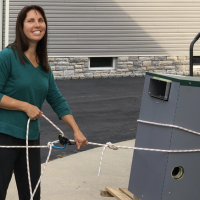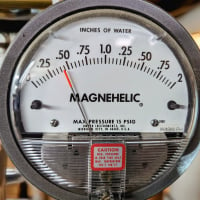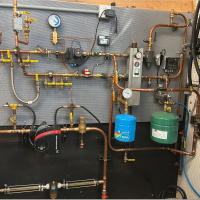Best Material to Use for Drainpipes in Residential Homes.
Comments
-
Home Depot says so…it's the sharkbite of waste piping!
ConnecTite fittings are reversible, reusable and repositionable
Their instructions say 3 strikes and you're out:NJ Steam Homeowner.
Free NJ and remote steam advice: https://heatinghelp.com/find-a-contractor/detail/new-jersey-steam-help/
See my sight glass boiler videos: https://bit.ly/3sZW1el0 -
-
I always thought PVC carrying waste had to protected from UV due the plastic becoming vulnerable to breakage.
0 -
-
Anyone here use the Charlotte ConnecTite system?
0 -
Copper to CI is going to make the least amount of noise … The OP could be looking at a connection that is 80 years old and even with that age the CI is most likely fine. I lost my old school plumber from Philly w/ covid and my last project was all PVC … it's loud even with some thought about insulation for the PVC. It surprised me that you could hear some of the smaller runs to the main stack.
1 -
-
-
Do you use a propane torch with an auto-lighter? How lazy are you not to use a kerosene torch?
How lazy are you to buy pre-made copper fittings instead of cutting and fitting your own from pipe?
It will never fail to amaze me that improvements to products that increase their flexibility and decrease valuable labor time are constantly seen as "lazy" in this industry.
NJ Steam Homeowner.
Free NJ and remote steam advice: https://heatinghelp.com/find-a-contractor/detail/new-jersey-steam-help/
See my sight glass boiler videos: https://bit.ly/3sZW1el1 -
Thank you Pecmsg! As far as noise abatement, if a client wants silence Charlotte No Hub is my go to. Mad Dog
0 -
-
I agree! But would you call someone who chose to use propress "lazy"?
NJ Steam Homeowner.
Free NJ and remote steam advice: https://heatinghelp.com/find-a-contractor/detail/new-jersey-steam-help/
See my sight glass boiler videos: https://bit.ly/3sZW1el0 -
@ethicalpaul My torches do not have an autolighter. I use a flint lighter with them.
Single pipe 392sqft system with an EG-40 rated for 325sqft and it's silent and balanced at all times.
0 -
-
I used ABS 40 years ago in my house. So far it still looks new and I have had no leaks. The noise is not overly noticeable to me but could be an issue for others depending on location. My father in law used copper waste 60 years ago and I have had to change a couple of horizontal runs. They rot out on the top of the pipe so I am assuming sulphur in the sewer gas but I don't really know.
Brian
1 -
-
I hope my point remained discernible
NJ Steam Homeowner.
Free NJ and remote steam advice: https://heatinghelp.com/find-a-contractor/detail/new-jersey-steam-help/
See my sight glass boiler videos: https://bit.ly/3sZW1el0 -
-
-
that is thinwall pvc, right?
0 -
-
-
What time frame are we thinking about? I've seen pretty crapped out eighty year old iron. ABS is supposed to be even more slippery than polyethylene or PVC. How long is plastic supposed to last?
0 -
I'm not sure you'll find an exact answer to that.
I have 38 year old pvc in my house that looks like new on the inside.
But I also have a lot of 115 year old cast iron I'm in the process of tearing out and replacing with pvc. But, 115 years is a pretty decent length, regardless.
I've seen some plastics that are from the 1920s that are still fine. I have a decent amount of what's essentially Formica from the 1930s that is still like new, still flexible too. I've also seen a lot of rubber and plastics that turn to garbage after some time.
PVC in a basement, away from the sun and outdoor elements will probably easily outlast any one person. If it's exposed on a roof it's best to paint it to protect it from UV.
Single pipe 392sqft system with an EG-40 rated for 325sqft and it's silent and balanced at all times.
0 -
I recall some import CI developing cracks and some lawsuits
Pipe lawsuit.com would be glad to help with that
Bob "hot rod" Rohr
trainer for Caleffi NA
Living the hydronic dream0 -
The bottom line is....any material, installed expertly, is a sight to behold...pride shows…mad Dog
0 -
cockroaches will use PVC pipe as highway network after we are gone. Already are in many places. 🪳🪳🪳
0 -
-
As Dan once said, Buy the contractor because he is the one that will make or break the job,
There is the issue with pvc pipe that will bend on horizontal runs unless extra suppurt is installed
And there is the cheap China no hub that I have had to replace in 15-20 years old building completely cracked and that's painful work especially with homeowners next to you crying for there new paint
Also a probable cause for cracked cast iron is the fact that people will install the condensing boilers without the neutralizer filter I believe that to be the case in one building I have worked on
0 -
-
Same for stuff from the 1920s. These lines cracked sometime in late 1990 but only horizontal runs.
0 -
-
i think it is the relatively large hole with the tapered thread wedged in to it. It would be like tapping in to a random part in a boiler section or tapping the piping in to the side of a radiator section.
0 -
Thats possible for the case posted. However I had plenty of other failures in horizontal run with no special feature. Basically every horizontal run subjected to hot cold cycles failed. only CI left in home now is a vertical run servicing a toilet and small bathroom sink.
0
Categories
- All Categories
- 87.3K THE MAIN WALL
- 3.2K A-C, Heat Pumps & Refrigeration
- 61 Biomass
- 429 Carbon Monoxide Awareness
- 120 Chimneys & Flues
- 2.1K Domestic Hot Water
- 5.8K Gas Heating
- 115 Geothermal
- 166 Indoor-Air Quality
- 3.7K Oil Heating
- 77 Pipe Deterioration
- 1K Plumbing
- 6.5K Radiant Heating
- 395 Solar
- 15.7K Strictly Steam
- 3.4K Thermostats and Controls
- 56 Water Quality
- 51 Industry Classes
- 50 Job Opportunities
- 18 Recall Announcements


















